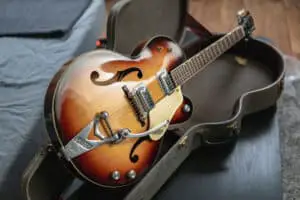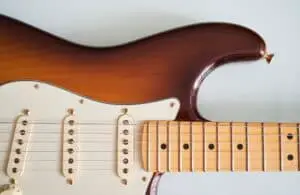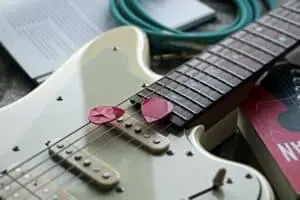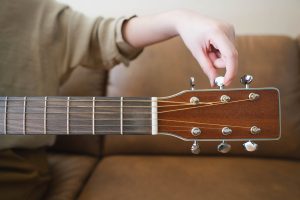
Have you ever been in a band or played with someone who had an amp with lots of gain? If so, you’ve probably wondered what “gain” is.
Gain is one of the most important features of a guitar amplifier. It is how much your guitar signal gains from amplification. It can make your amp sound clean and bright or dirty and mean. It can be used to create all sorts of different sounds, from a gentle overdrive to a full-on metal distortion.
Once you’ve finished this reading, you’ll understand what gain is, how it works, and the difference between gain and volume on your guitar amp.
Let’s get started!
What Is Gain on a Guitar Amp and What Does It Do?
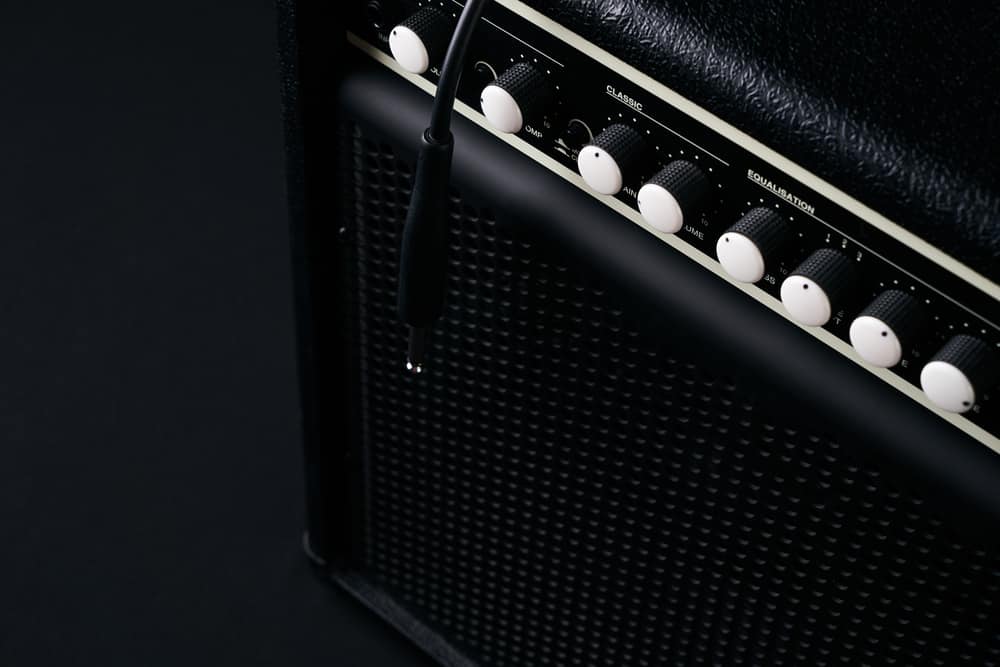
One of the most important guitar amplifier settings is known as “gain.” But what exactly is gain, and what does it do?
One guitar amp knob you’ll see on almost every guitar amplifier is the GAIN knob. This knob adjusts the guitar signal amplitude going into the preamp section. In simple terms, the gain is a measure of how much the guitar signal is amplified in the amp’s preamp section.
The guitar input signal comes into your amplifier. The preamp section of your guitar amp then takes that guitar signal and amplifies it. The amount of amplification is set by how high you have your GAIN knob set.
If you have your GAIN all the way up to max, then your guitar signal will be amplified quite a bit before hitting the next stage, where distortion is added.
The result will be a much larger guitar signal amplitude (or “louder” guitar signal) with more distortion added. If you want a very distorted sound, you would turn your GAIN all the way up to max and then also turn up the volume on your guitar amplifier.
Adjusting the Gain on Your Amp for Different Sounds
As any guitarist knows, getting the perfect sound depends on various factors, from the type of guitar you’re playing to the strings you’re using. But one of the most important elements is your amplifier.
The right amp can make all the difference in your tone, and it’s important to know how to adjust the gain to get the sound you want.
The first thing to understand is that the gain control on your amp is not the same as the volume control. The gain controls the level of distortion, while the volume controls the overall loudness of the sound.
When setting up your amp, it’s best to start with both knobs at the 12 o’clock position. Slowly turn the knob clockwise or counterclockwise until you find the desired sound.
If you want a clean tone, you’ll want to keep the gain low and focus on adjusting the volume knob to get the right sound level. If you’re going for a more distorted sound, you’ll need to turn up the gain. Just be careful not to overdo it – too much distortion can quickly become overwhelming.
The key is to balance the two knobs that give you the sound you’re looking for.
High Gain vs. Low Gain Amps
There is a lot of debate among guitar players about the best type of amp to use – high gain or low gain. The answer to this question is not clear-cut, as it depends on what kind of sound you are going for.
If you want a really heavy, distorted sound, you will want to use a high-gain amp. On the other hand, if you are looking for a cleaner sound, you will want to use a low-gain amp.
High gain amps are known for their ability to distort at lower volumes, making them ideal for heavier styles of music. On the other hand, low gain amps have a cleaner tone and offer more headroom, better suited for lighter styles.
Whichever route you choose, make sure you try out a few different amps before settling on one – after all, variety is the spice of life!
Difference Between Gain and Volume on a Guitar Amp
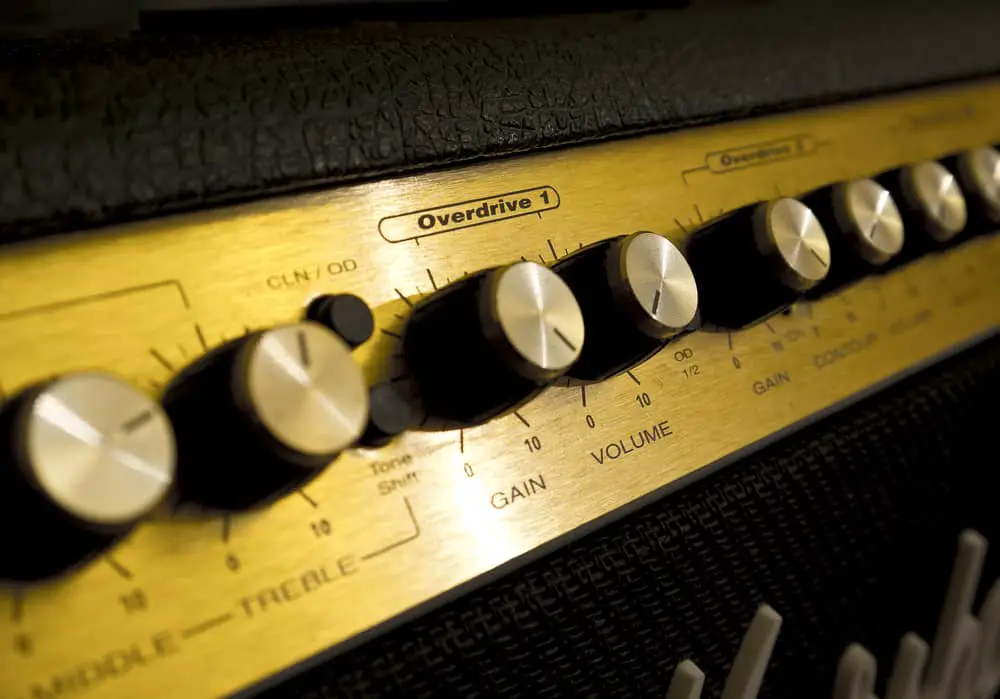
When it comes to guitar amps, volume and gain are often confused. However, they are actually two very different things.
Volume is simply a measure of how loud the amp is. The higher the volume, the louder the amp will be. On the other hand, gain is a measure of the distortion of the signal. The higher the gain, the more distorted the signal will be. So, volume is related to loudness, and gain is related to tone.
Gain is typically adjusted first to get the desired amount of distortion. Once the desired level of distortion is achieved, volume can then be adjusted to control the overall output level.
One common question that guitarists have is whether they should use the gain or volume knob on their amp to control the overall level of sound. The simple answer is that it depends on the style of music you’re playing.
If you’re doing a clean Blues or Folk set, you’ll want to use the volume knob to control your sound. This will give you a warm, organic sound perfect for these genres.
But if you’re playing heavier Rock or Metal, you’ll want to use the gain knob to get a more distorted sound. This will give you the crunchy tones essential for these music styles.
When setting your amp, make sure to keep this distinction in mind. Otherwise, you might end up with an unpleasant surprise when you start playing.
Conclusion
Gain and volume are two critical elements to consider when setting up your guitar amp. The right combination of these knobs can help you achieve the sound you’re looking for.
We have learned that the gain control on a guitar amp is not the same as the volume control. The gain controls the level of distortion, while the volume controls the overall output level. Finding a balance between the two knobs is important to get the desired sound. Lastly, the type of amp you use (high gain or low gain) will depend on your music style.
Have you experimented with different levels of gain to find the perfect tone for your music? Let’s know in the comment box below!
Frequently Asked Questions
Gain staging is the process of adjusting the gain and volume on your guitar amp to achieve the optimal tone and maximum quality.
A gain of 1:1 on a guitar amp means that the input level matches the output level. In other words, there is no increase or decrease in the signal level. This is typically measured in ratios, so a unity gain would be considered 1:1.




